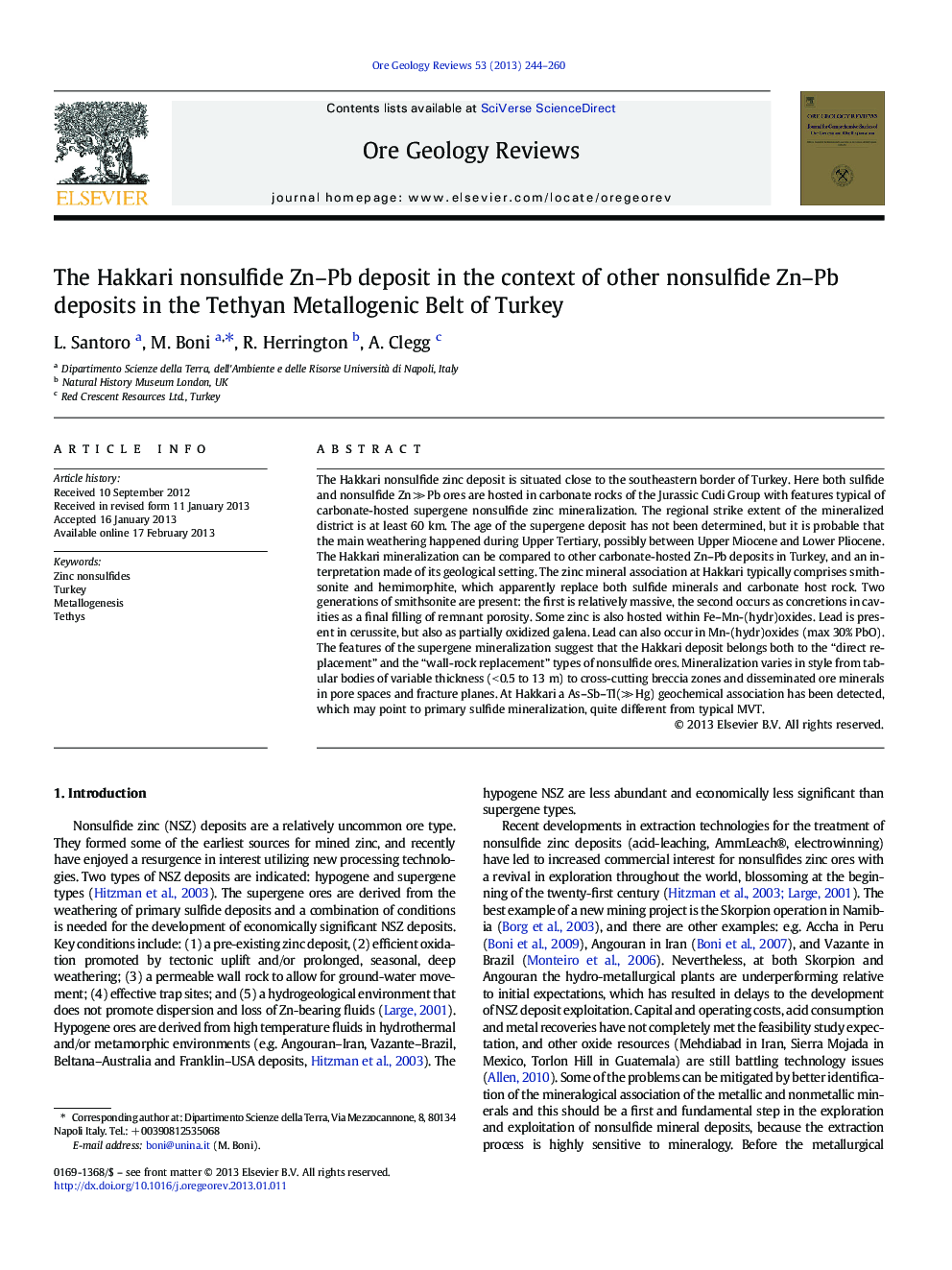| کد مقاله | کد نشریه | سال انتشار | مقاله انگلیسی | نسخه تمام متن |
|---|---|---|---|---|
| 4697548 | 1637250 | 2013 | 17 صفحه PDF | دانلود رایگان |

The Hakkari nonsulfide zinc deposit is situated close to the southeastern border of Turkey. Here both sulfide and nonsulfide Zn ≫ Pb ores are hosted in carbonate rocks of the Jurassic Cudi Group with features typical of carbonate-hosted supergene nonsulfide zinc mineralization. The regional strike extent of the mineralized district is at least 60 km. The age of the supergene deposit has not been determined, but it is probable that the main weathering happened during Upper Tertiary, possibly between Upper Miocene and Lower Pliocene. The Hakkari mineralization can be compared to other carbonate-hosted Zn–Pb deposits in Turkey, and an interpretation made of its geological setting. The zinc mineral association at Hakkari typically comprises smithsonite and hemimorphite, which apparently replace both sulfide minerals and carbonate host rock. Two generations of smithsonite are present: the first is relatively massive, the second occurs as concretions in cavities as a final filling of remnant porosity. Some zinc is also hosted within Fe–Mn-(hydr)oxides. Lead is present in cerussite, but also as partially oxidized galena. Lead can also occur in Mn-(hydr)oxides (max 30% PbO). The features of the supergene mineralization suggest that the Hakkari deposit belongs both to the “direct replacement” and the “wall-rock replacement” types of nonsulfide ores. Mineralization varies in style from tabular bodies of variable thickness (< 0.5 to 13 m) to cross-cutting breccia zones and disseminated ore minerals in pore spaces and fracture planes. At Hakkari a As–Sb–Tl(≫ Hg) geochemical association has been detected, which may point to primary sulfide mineralization, quite different from typical MVT.
► The Hakkari Zn-Pb deposit is in Jurassic carbonate rocks (Arabian Platform).
► The economic concentrations are supergene (“direct- and wall rock replacement”).
► Main ore minerals are: smithsonite>hemimorphite>>cerussite.
► As-Sb-Tl(>>Hg) geochemical association (no primary MVT ores).
Journal: Ore Geology Reviews - Volume 53, September 2013, Pages 244–260